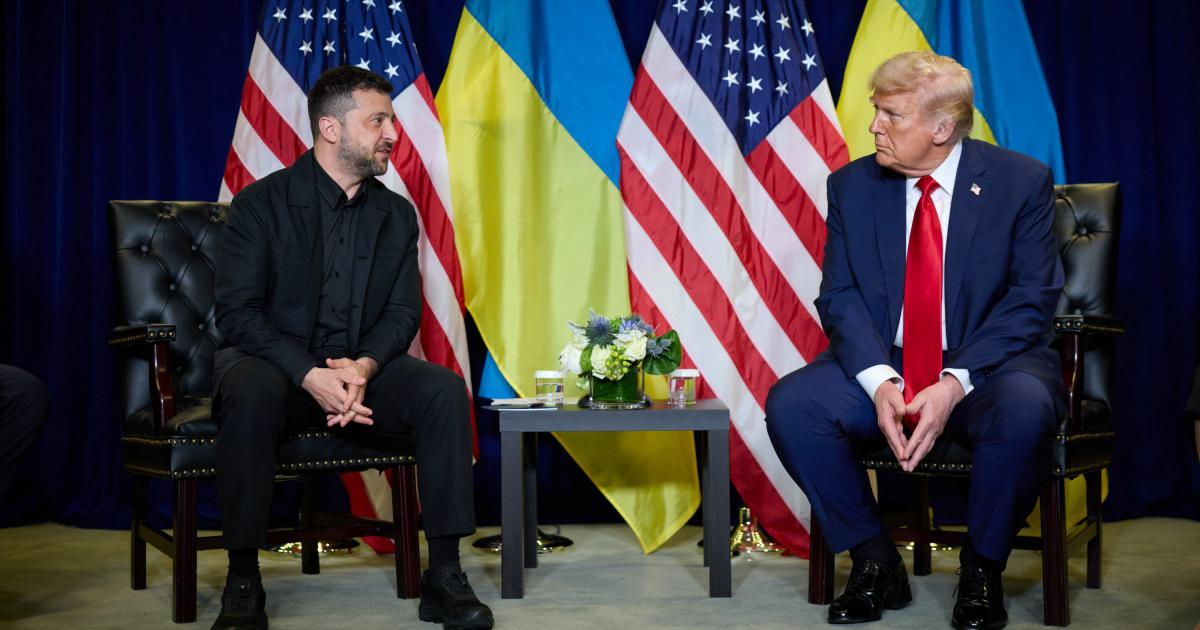President Zelensky Visits the United States: Ukraine Seeks Advanced Defense Amid Escalating Attacks
Politics
2025-10-16 12:20:51
👁️ 1 views

On October 16, 2025, Ukrainian President Volodymyr Zelensky arrived in Washington, D.C., for high-level talks with former U.S. President Donald Trump, focusing on securing advanced defense systems and military aid to counter Russia’s intensified attacks on Ukraine. This visit comes amid a period of heightened tension, as Ukraine faces large-scale missile and drone strikes targeting its energy and critical infrastructure.
Purpose of the Visit
The primary objective of President Zelensky’s visit was to request the deployment of Tomahawk cruise missiles and advanced air defense systems, including the Patriot missile batteries and terminal high-altitude area defense (THAAD) technologies. Ukrainian officials emphasized that these systems are urgently needed to protect civilian infrastructure, military bases, and strategic locations against precision strikes and swarm drone attacks.
Ukrainian military experts argue that recent attacks demonstrate Russia’s evolving tactics, combining long-range missile strikes with coordinated drone swarms, aiming to overwhelm existing air defense networks. The inclusion of Tomahawk missiles would not only enhance Ukraine’s defensive capabilities but also provide a deterrent against further aggression.
Meetings and Diplomatic Engagements
During his two-day stay in Washington, Zelensky met with a range of political, military, and economic leaders. While the focus remained on defense, discussions also touched on economic aid, energy security, and rebuilding infrastructure damaged during ongoing conflict.
Trump expressed his support for Ukraine, emphasizing the importance of strengthening defensive capabilities to prevent further civilian casualties and disruptions to critical infrastructure. The meetings included detailed briefings from Ukrainian military officials on the current state of the conflict, highlighting the urgency of acquiring long-range missile systems and air defense technology.
Strategic Implications
Securing Tomahawk missiles and advanced air defense systems would significantly shift Ukraine’s defensive posture, providing the ability to:
Intercept incoming missile strikes and drones with higher accuracy and reliability.
Protect key cities and critical infrastructure, including power plants, airports, and military bases.
Enhance deterrence against further Russian escalation by demonstrating Ukraine’s ability to strike back if attacked.
Military analysts suggest that the arrival of such systems could force a recalibration of Russia’s military strategy, potentially reducing the frequency of high-intensity strikes against civilian targets.
International Support and Reactions
The U.S. and several European countries have maintained strong support for Ukraine throughout the conflict, providing financial aid, military equipment, and intelligence sharing. Zelensky’s visit reinforced Ukraine’s ongoing partnership with the U.S., showcasing the importance of coordinated international support in sustaining Ukraine’s defense capabilities.
European leaders, including Germany, France, and the United Kingdom, welcomed the discussions, highlighting the need for multilateral coordination in providing Ukraine with advanced defensive tools. The European Union has also pledged continued financial and technical support for rebuilding and securing energy infrastructure damaged in recent attacks.
Economic and Civilian Considerations
While military aid remains a top priority, Zelensky emphasized the need to protect civilians and sustain essential services. Recent Russian attacks on energy infrastructure caused blackouts in multiple regions, disrupting daily life, healthcare services, and industrial operations. Ukrainian authorities stressed that advanced defense systems would not only counter military threats but also safeguard civilians and economic stability.
Ukrainian economists warn that without enhanced protection, repeated attacks on energy facilities could slow industrial production, increase costs for utilities, and reduce agricultural output, particularly in regions dependent on automated systems.
Technology and Deployment Challenges
Deploying Tomahawk missiles and high-end air defense systems is complex and requires significant training and logistical support. Ukrainian military personnel will need to undergo intensive instruction to operate these advanced technologies effectively. Additionally, integration with existing defense networks must be seamless to ensure maximum coverage against coordinated missile and drone attacks.
Analysts predict that training and deployment could take several months, during which Ukraine will rely on existing defenses and international intelligence support to counter ongoing threats.
Political Implications
Zelensky’s visit carries important diplomatic weight. Meeting with Trump in Washington signals Ukraine’s intent to maintain strong, high-level ties with the United States and to leverage these relationships for military and political support.
Domestically, the visit is portrayed as a demonstration of leadership and proactive diplomacy, showing the Ukrainian public that their government is taking all possible steps to strengthen defense capabilities and ensure national security.
Internationally, the discussions could influence other countries to increase military aid and intelligence sharing, creating a more coordinated defense network across Europe and North America to counter Russian aggression.
Looking Ahead
The outcome of Zelensky’s visit may determine Ukraine’s military resilience in the coming months, particularly as the winter season approaches, traditionally a period of increased vulnerability due to energy demands and logistical challenges.
If agreements are reached, Ukraine could soon receive Tomahawk missiles, Patriot systems, and advanced radar networks, significantly enhancing deterrence and defensive operations. These systems could also allow Ukraine to respond more effectively to cross-border attacks and reduce the operational advantage currently held by Russia in terms of missile capabilities.
Conclusion
President Zelensky’s visit to Washington underscores the urgency of strengthening Ukraine’s defense in response to escalating attacks on energy and civilian infrastructure. By seeking advanced weapons systems and air defense technology, Ukraine aims to protect its population, stabilize critical services, and signal to the international community its readiness to defend its sovereignty.
This diplomatic mission also highlights the importance of strong international alliances, illustrating that in modern conflicts, political engagement and military capability go hand in hand. As the situation evolves, the world will closely watch whether Ukraine can secure the support needed to withstand ongoing aggression and maintain resilience amid a challenging security environment.
